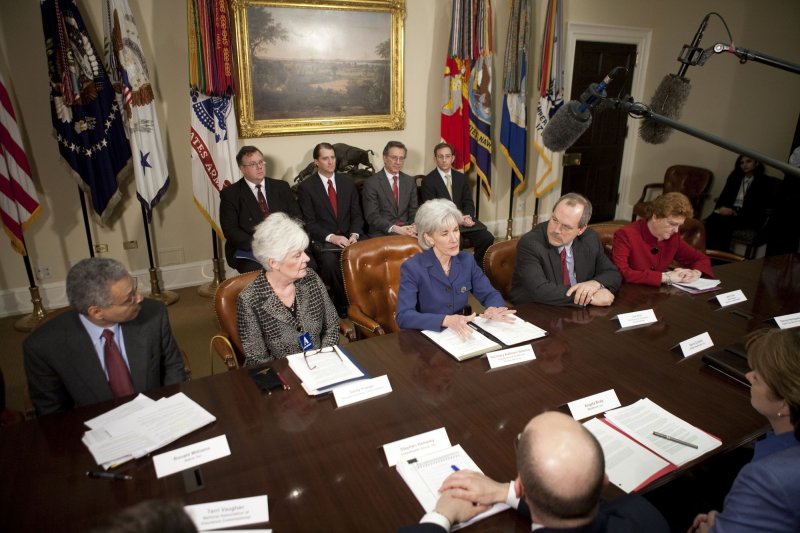Paul B. Ginsburg, president of the Center for Studying Health System Change, said the best opportunity to pursue cost containment in the next five to 10 years was through reforming provider payment to gradually diminish the role of fee-for-service reimbursement.
UPI/Brendan Hoffman/Pool |
License Photo
WASHINGTON, May 10 (UPI) -- Reducing the yearly increases in the cost of U.S. healthcare and improving quality will require both sticks and carrots to more-efficient care, researchers say.
Paul B. Ginsburg, president of the Center for Studying Health System Change, said the best opportunity to pursue cost containment in the next five to 10 years was through reforming provider payment to gradually diminish the role of fee-for-service reimbursement.
"Public and private payers have begun many promising payment reform pilots ... but meaningful cost containment from payment reform will not be achieved until Medicare and Medicaid establish stronger incentives for providers to contract in this way, with discouragement of non-participation increasing over time," Ginsburg said in a article in Health Affairs.
At the same time, encouraging patients through financial incentives to choose higher-performing providers can help control costs.
The article, "Achieving Health Care Cost Containment Through Provider Payment Reform That Engages Patients and Providers," also said: "Ending fee-for-service payment -- the predominant U.S. healthcare payment model where services are paid for separately giving an incentive for physicians to provide more treatments because payment is dependent on the quantity of care, rather than quality of care -- once and for all is unlikely to be feasible for quite some time, but gradually increasing disincentives for providers that do not participate in reformed payment approaches is a practical way to move forward."
Reformed payment models will also need to increasingly engage beneficiaries, in both the public and the private sectors, to drive patients to providers that are more efficient and deliver higher quality care, Ginsburg said.















